Collaborations and Colleagues
This is the place where I have the opportunity to embarrass all of the people with whom I have worked!
Your picture will soon appear here (especially if someone donates a jpeg)!
 |
This image was inserted by someone else! |
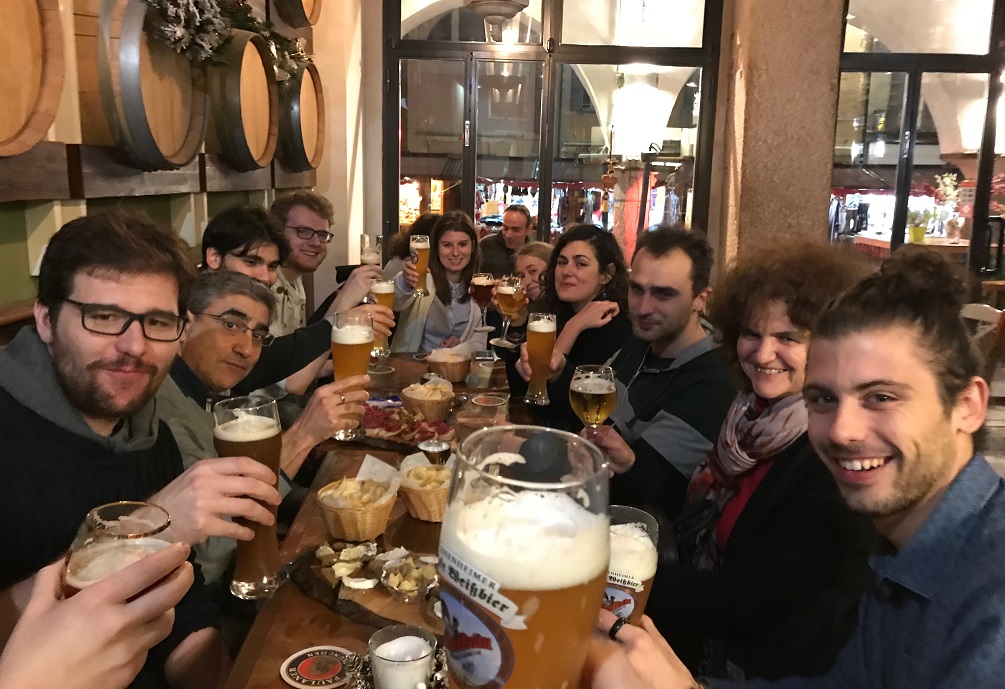 |
This is just part
of the 'Gruppo Alvarese' (the ‘True Depths’ project led by Matteo Alvaro
with whom I work in Pavia (and Genova, Berne, Hamburg ....) on developing methods of elastic piezobarometry;
which means determining P and T points in the history of a rock by studying the remnant strains in single crystal inclusions
trapped inside other minerals.
Around the table from left to right: Mattia Gillio (Pavia), Marco Scambelluri (Genova), Mattia Mazzucchelli, Hugo van Schrojenstein, Mara Murri, Marta Morana, Claudia Stangarone (all Pavia), Nicola Campomenosi (Genova), Boriana Mihailova (Hamburg), Mattia Bonazzi (Pavia). Out of shot, but maybe you can see their beer glass: Mauro Prencipe (Torino), Gabrielle Zaffiro and Matteo Alvaro (Pavia). |
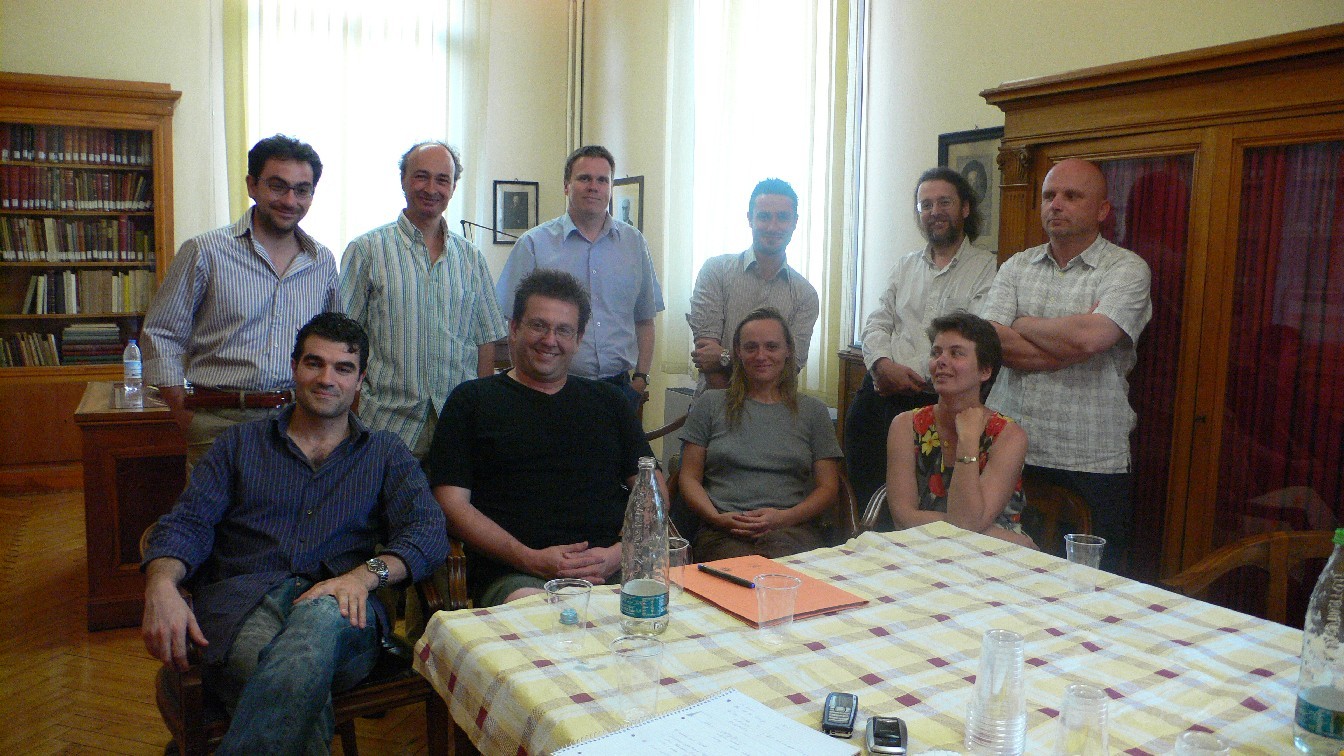 |
This is (part
of) the HP group at the first meeting in Padova (July 2008) to discuss how to promote high-pressure single-crystal methods. It made start to regular meetings and workshops (e.g.
Darmstadt and Bergen) addressed to PhD students and
researchers who want to approach (or to deepen their knowledge on) HP
single-crystal methods. In the front, from the left: Fabrizio Nestola (University of Padova), Ronald Miletich (University of Vienna), Clivia Hejny (University of Innsbruck), Karen Friese (JCNS, Julich). In the second row, from the left: Diego Gatta (University of Milano), Tonci Balic-Zunic (University of Copenhagen), Volker Kahlenberg (University of Innsbruck), Matteo Alvaro (University of Pavia), Ross Angel, Andrzej Grzechnik (RWTH Aachen). |
 |
This is from 2002(?). Tiziana Boffa Ballaran (on the left) is the the staff crystallographer at the
Bayerisches Geoinstitut in Bayreuth. We first worked together on the
high-pressure phase transitions in amphiboles (see European Journal of Mineralogy 12:1195-1213) and have since determined together
the high-pressure behaviour of the mineral lawsonite which plays an important role in water transport in subducting slabs
(see European Journal of Mineralogy 15:241-246), as well as working together on diffractometer developments. Jennifer Kung (on the right) is faculty at the National University in Taiwan. We collaborated on determining the equations of state of materials by combining measurements of density by X-ray diffraction with measurements of elasticity by ultrasonic interferometry (see Physics & Chemistry of Minerals, 28:35-43). |
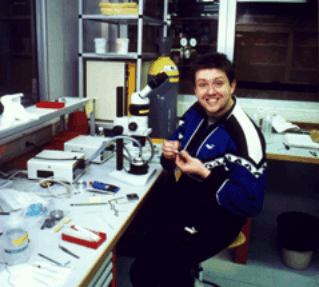 |
When I was working in Bayreuth I was fortunate to have several talented post-docs working with me on various projects in high-pressure crystallography. One was Ronald Miletich, now Professor of Mineralogy at the University of Vienna. With David Allan (now at the Diamond synchrotron) he built up the lab in Bayreuth, developed a new design of diamond-anvil cell, and investigated the high-pressure behaviour of a number of transition-metal compounds. |
 |
Just to
prove that while crystallographers sometimes go on field trips,
petrologists sometimes do diffraction. This is Prof. Dr. Priv Doz
Alan Woodland, pictured in complete control of the high-pressure
beamline at the ESRF (European synchrotron) in Grenoble. I have published many papers with Alan, mostly on systems in which cation order/disorder plays a major role in determining the phase equilibria. Our biggest discovery (so far) was that all of the Mg in wadsleyite can be completely substituted by Fe (see American Mineralogist, 83:404-408). Alan is now a Professor in the Mineralogical Institute in Frankfurt. Alan's work on the fayalite-magnetite (Contributions to Mineralogy and Petrology, 139:734-747) raised questions about possible incorporation of Fe3+ into wadsleyite and the possibility of redox melting in the Earth's transition zone. |
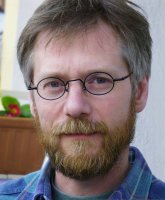 |
I have a long-standing collaboration with Prof. Ulli Bismayer of the Mineralogical Institute in Hamburg, working on the high-pressure phase transitions in ferroelastic lead phosphate and related compounds. These have the interesting property that their high pressure phases have the same symmetry as the phases found at high-temperatures. But while the high-T phases are dynamic in nature the high-pressure phases exhibit static disorder. |
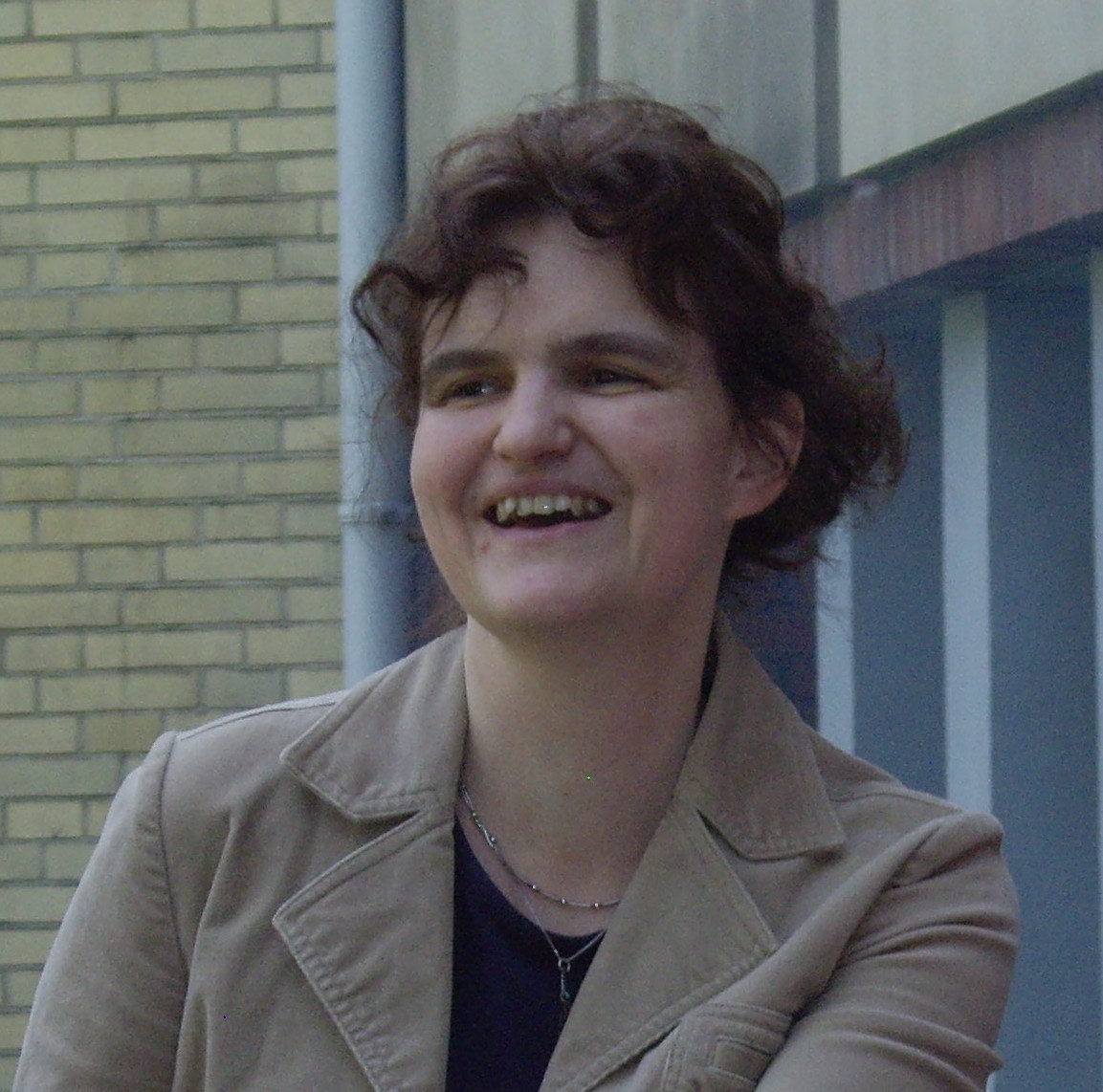 |
Since 2007 I have had an enormously productive collaboration with Prof. Boriana Mihailova of the University of Hamburg and her students to determine the local structures of complex ferro-relaxor perovskites. These materials are inhomogeneous on many length scales but by using a combination of Xray single-crystal diffraction, Raman spectroscopy and neutron powder diffraction we have discovered a new phase transition in these materials at modest pressures. That transition, and the behaviour at pressures below the transition, allowed us for the first time to show that octahedral tilting plays an essential role in mediating the relaxor properties of these materials. See: Acta Crystallographica B, 66, 280-291; Physical Review B, 81, 174116; Physical Review Letters, 101, 017602. |
 |
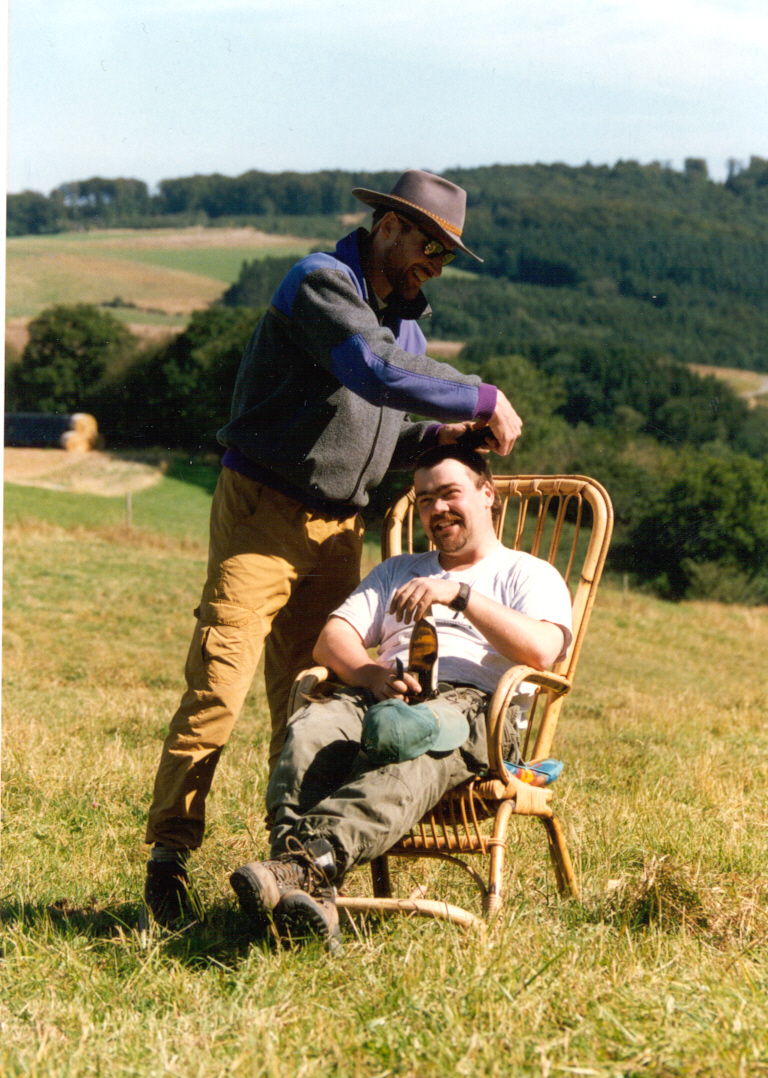 |
| I refuse to explain these pictures of Prof. Cliff Shaw (University of New Brunswick) except to say that these are from a field trip to the Eifel region of Germany to collect xenoliths from which one can determine the magmatic history of the volcanoes. | The other guy is Richard, famous beer drinker and mountain guide. |